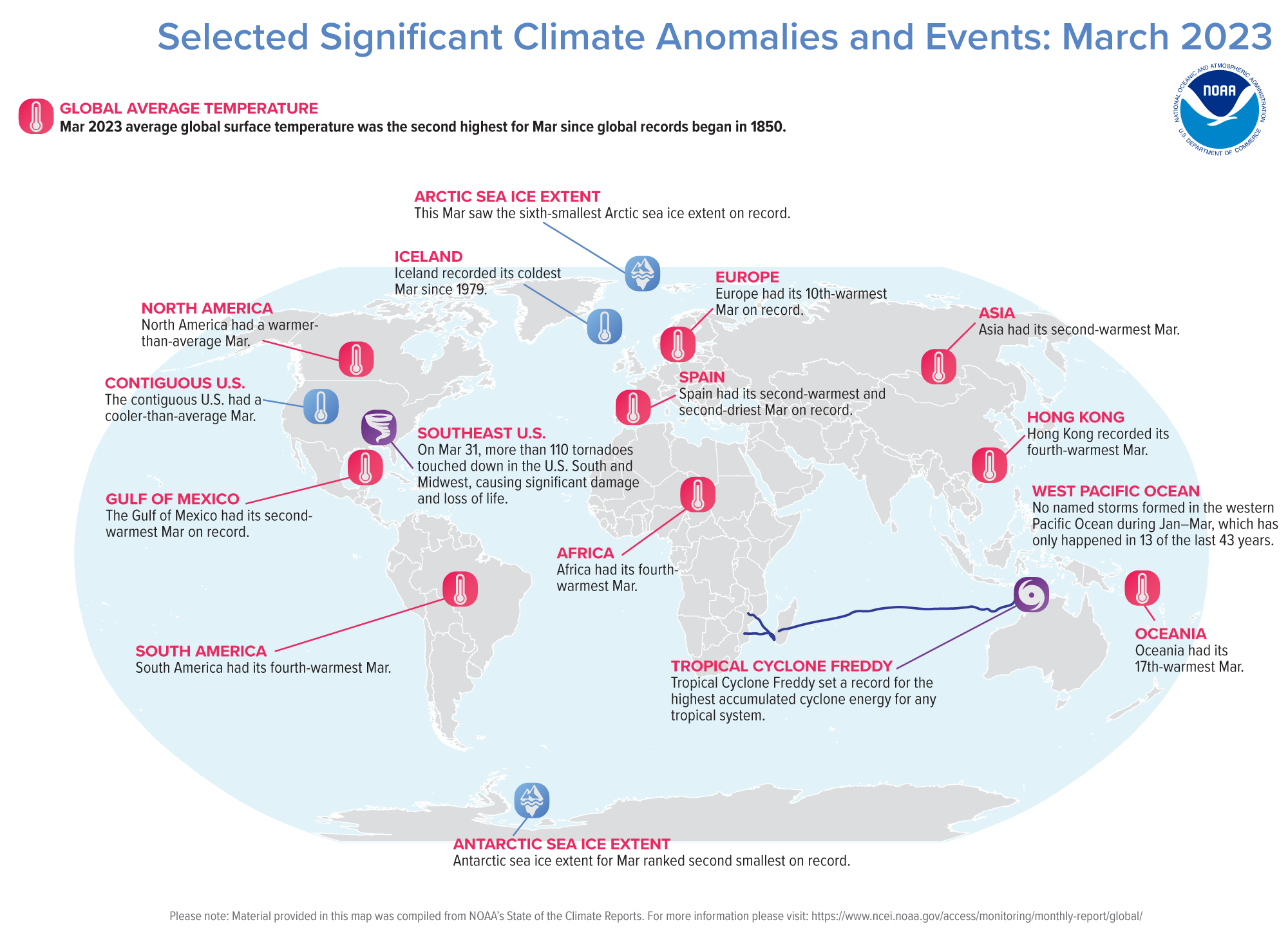Polar sea ice coverage for March 2023 ranked second smallest recorded

Aerial view of a harvesting machine clearing brown, drought-stressed fields of corn on March 12, 2023, in San Jerónimo Sud, Santa Fe, Argentina. According to experts, this drought, linked to a third straight La Niña climate pattern, is the worst in 60 years and affects 55% of the country. Argentina is the world's top exporter of soy oil and meal, the third for corn, and a major supplier of beef and wheat. (Photo by Sebastian Lopez Brach/Getty Images)
The planet continued its exceptionally warm start to the year with its second-warmest March on record.
Global sea ice coverage also felt the heat, with sea ice running at its second-smallest extent since records began in 1979, according to scientists from NOAA’s National Centers for Environmental Information.
Below are more highlights from NOAA’s latest monthly global climate report:
Climate by the numbers
March 2023
The average global land and ocean-surface temperature for March was 2.23 degrees F (1.24 degrees C) above the 20th-century average of 54.9 degrees (12.7 degrees C), ranking as the second-warmest March in the 174-year global climate record, behind March 2016.
March 2023 also was the 47th-consecutive March and the 529th-consecutive month with temperatures above the 20th-century average.
Looking at the continents, Asia had its second-warmest March on record, and South America and Africa each had their fourth-warmest. Europe saw its 10th-warmest March on record, while North America had a warmer-than-average March, but it did not rank among the top-20 warmest on record.
Year to date | January through March
The 2023 year-to-date (YTD) global surface temperature was the fourth warmest on record at 1.87 degrees F (1.04 degrees C) above the 20th-century average. Only the YTD for 2016 (warmest), 2020 (second) and 2017 (third) were warmer.
According to NCEI’s Global Annual Temperature Outlook, it’s near certain (>99.0% chance) that 2023 will rank among the 10 warmest years on record, with a 96% chance this year will rank among the top-five warmest.

Other notable climate events in the March report
- Sea ice hit near-record lows: Globally, polar sea ice coverage ranked as the second-smallest coverage (extent) on record since records began in 1979. Only 2017 had a smaller global extent. Arctic sea ice logged in at about 230,000 square miles below the 1991–2020 average—the sixth-smallest March extent in the 45-year record. Antarctic sea ice coverage came in at about 490,000 square miles below average, the second-smallest coverage on record.
- The tropics saw a lower-than-average number of named tropical storms, but one of those was record large: Four named tropical storms occurred across the globe in March, which was less than average. All four reached tropical cyclone strength (winds of 74 mph or higher), with three of those reaching major tropical cyclone strength (winds of 111 mph or higher). The exceptionally long-lived Tropical Cyclone Freddy in the South Indian Ocean set a record for the largest amount of accumulated cyclone energy — or ACE, a metric that indicates the amount of energy released by a tropical cyclone during its lifetime — for any storm on record.
More > Read NOAA’s latest climate report and download the images.



